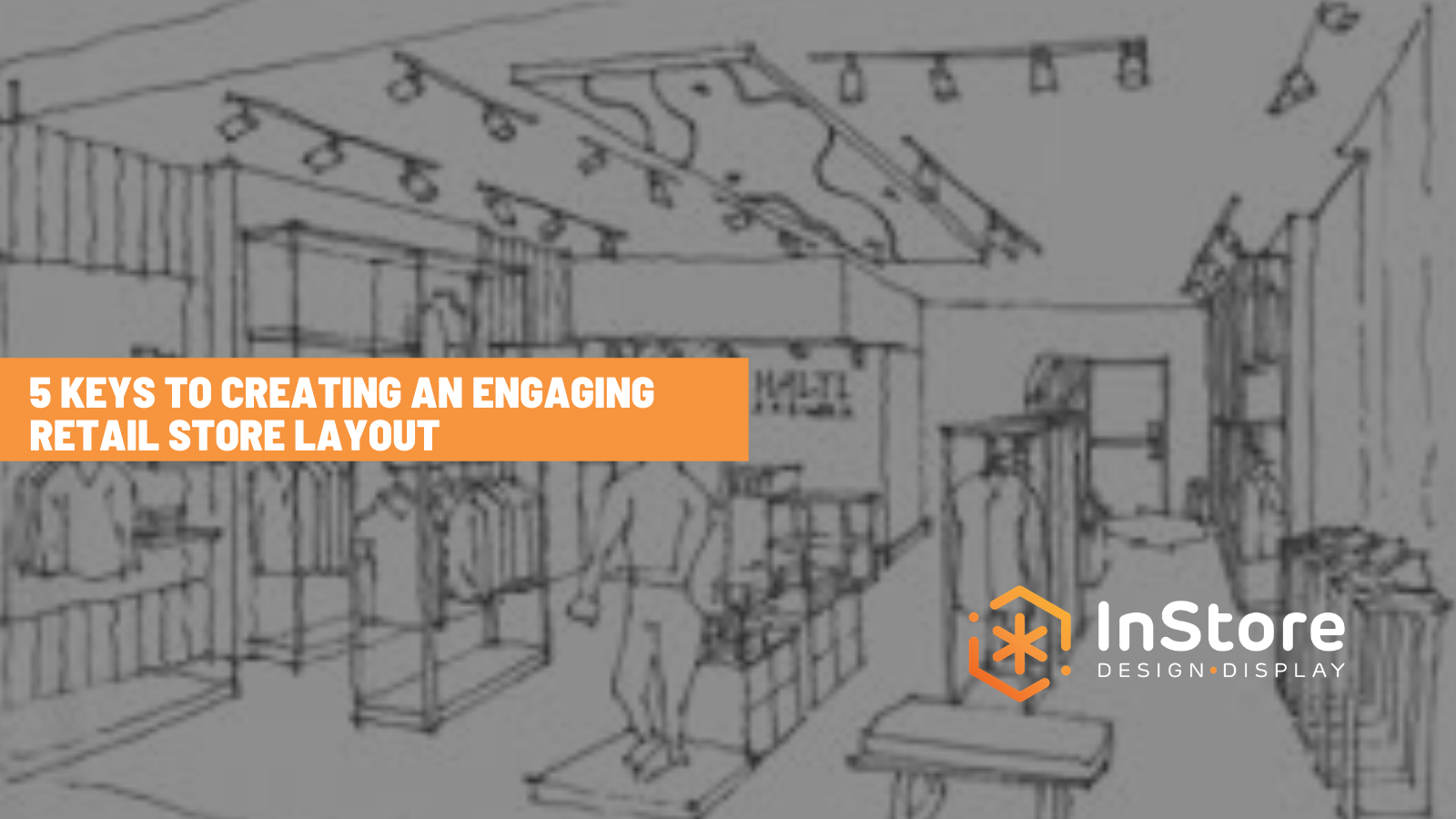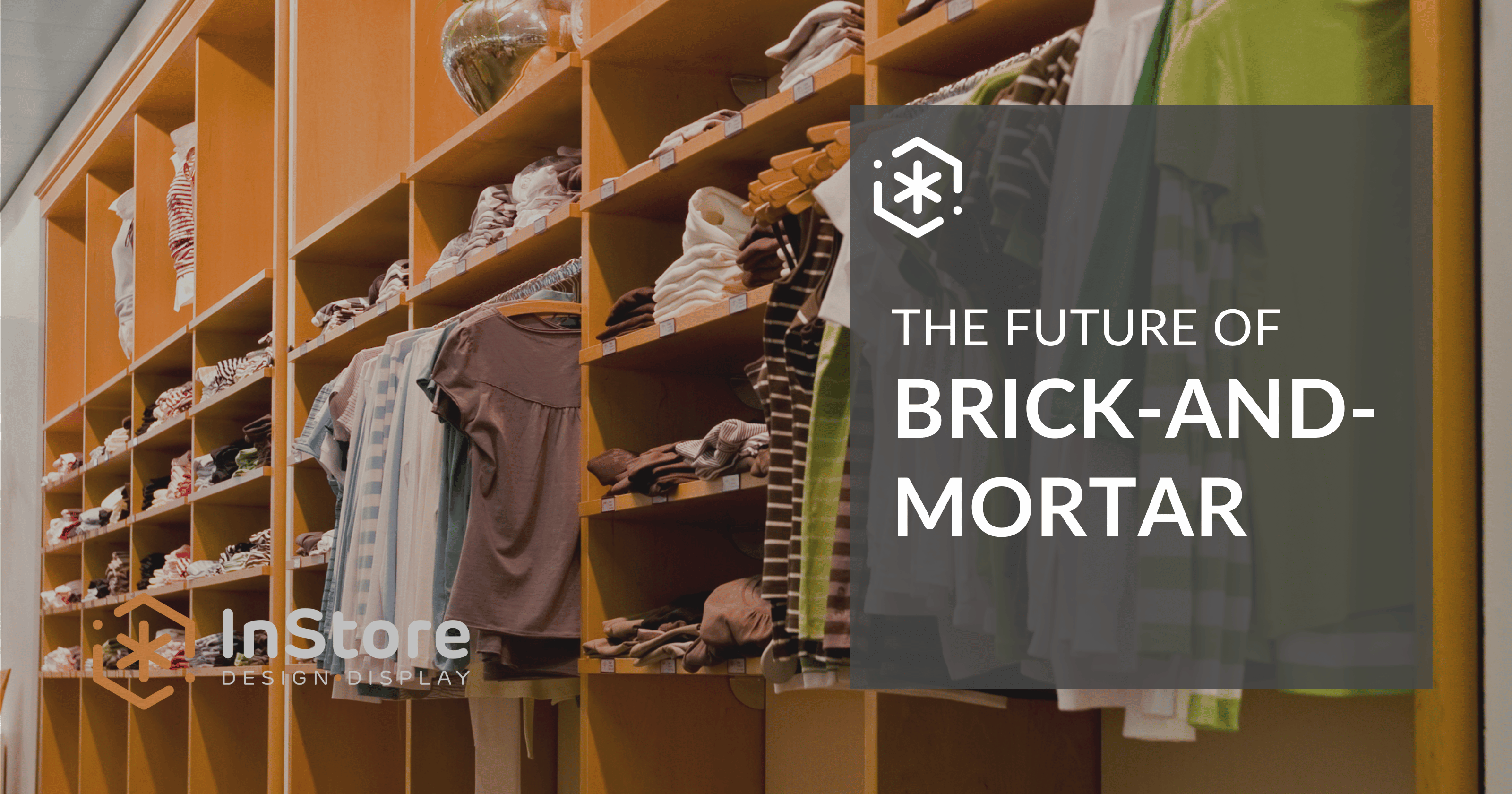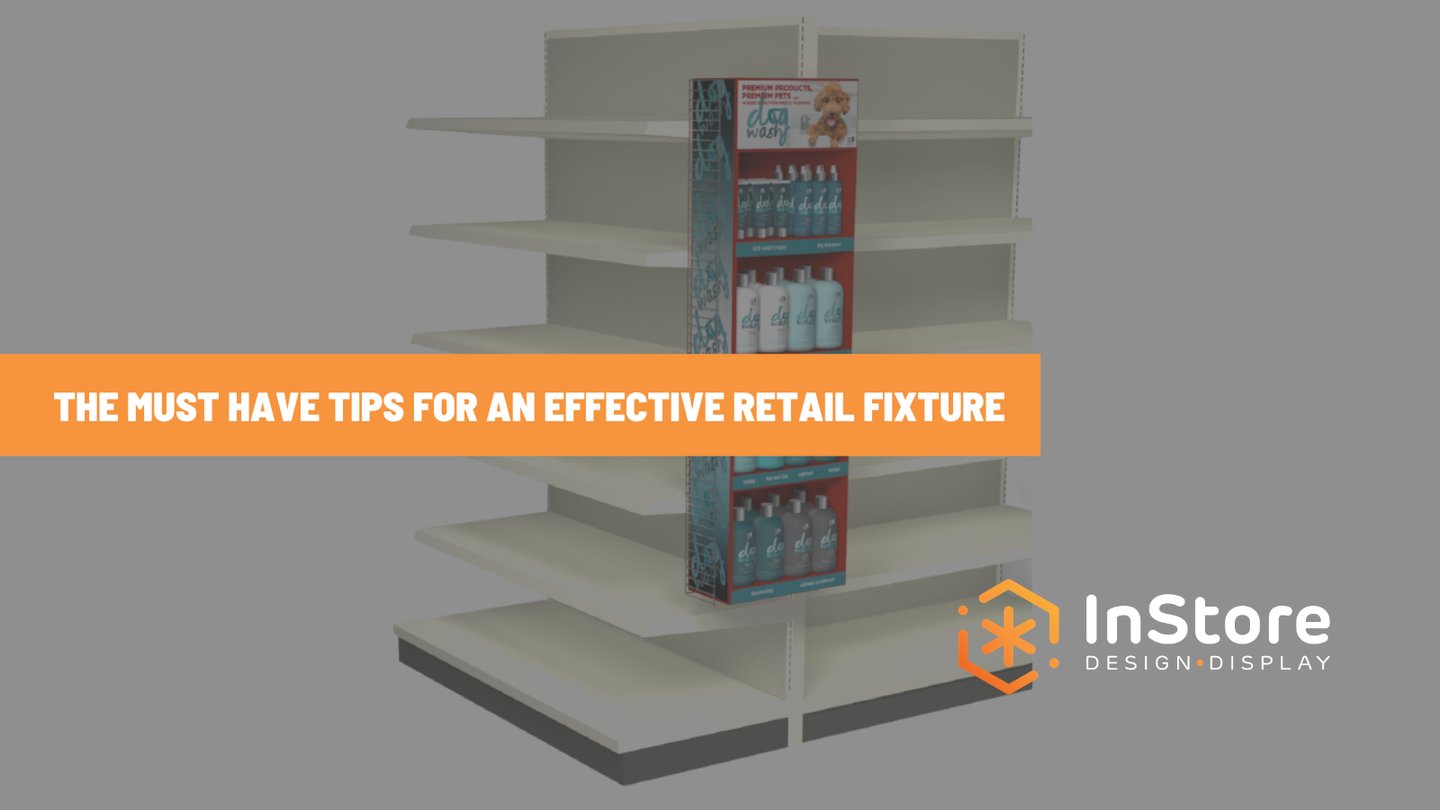
The Essential Elements of an Effective Retail Store Fixture
Shoppers make snap judgments about products in just 90 seconds—and most of that assessment is based on sight, color, and visual aesthetics alone.
That’s just a tiny window of time that brands have to catch their shoppers’ eyes and drive in-store conversions. Clearly, from the structure and landscaping of your retail display to the nitty-gritty of its colors, textures, and interactivity, every element needs to be highly attractive to grab consumers’ attention and encourage sales in your brick-and-mortar location.
One of the most important aspects of an effective in-store retail display is the fixture around which you design it. Examples of retail store fixtures include:
- Two-arm and four-arm racks
- Wall systems
- Display cases
- Nesting tables
- Focal wall units
- Gondola shelves
- Countertop displays
- Point-of-purchase displays
Depending on the number of product skews you’re hoping to display on the same fixture, you might find that different types of fixtures will be more effective than others. For example, if you’d like to display shirts with hats, you’ll probably want to choose a fixture with both hangers and shelves—or, if you’re looking to display only small, expensive products, you might prefer a glass display case instead.
In any case, there are three ways to go about choosing a fixture for your next display:
- Stock: You can buy pre-built stock fixtures from an eCommerce site like InStore Design Display's shop. Stock fixtures are a simple solution for those looking to save money and time—but you’ll have to design your display around the fixture, which can become complicated for certain products and stifle your creativity.
- Custom: You can also hire an experienced retail display designer to create a full-blown custom fixture for your specific brand and products. This method has the advantage of being fully unique to your brand, but the cost can become prohibitive for smaller brands and retailers.
- Stustom: A third option for retailers is what we call “stustom” fixtures. These displays blend standard, off-the-shelf fixtures with some custom elements such as graphical headers. This can be the ideal solution for retailers who want their displays to stand out, but still need to be mindful of their budgets.
No matter which method you choose, there are a few elements that every retail store fixture needs to effectively grab shoppers’ attention and encourage them to make a sale.
The 4 Elements of an Effective Retail Store Fixture
1. Aesthetics
Visual aesthetics are what people typically think of when they think of retail display fixtures, and with good reason—sight can be an incredible emotive and impactful aspect of consumers’ decision-making process.
However, color and graphics are not the only aesthetic elements you should pay attention to. The height and layout of your store fixture, as well as the touch and feel, can also have a huge impact on consumers’ impression of your brand and product.
For example, this retail space that we designed for Title Boxing provides a cohesive and engaging brand experience in more than 160 clubs nationwide. By enhancing and standardizing the retail spaces’ look and feel across all of their locations, Title Boxing has created a better, more profitable in-store experience.
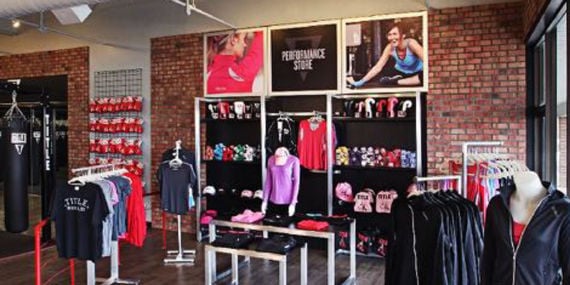 2. Versatility
2. Versatility
Along with the aesthetics of your fixture—which can go a long way in communicating your brand story—it’s important that your display is versatile enough to support cross-merchandising and, if necessary, to be effectively displayed in a variety of retail environments.
Cross-merchandising is a powerful tactic that retailers can use to tell your brand story, encourage higher-value purchases, and promote product discovery. By pairing shirts with belts or tortilla chips with queso dip, for example, you can entice shoppers to consider buying complementary products and boost your overall sales.
Additionally, every retail location is different, and certain retail fixtures might not fit as well into one environment as they did into others. Flexible, modular retail fixtures tend to perform better than inflexible, non-modular ones, because they can be adapted slightly to fit the retail environment in which they live.
For example, this highly versatile, modular system that we developed for the Sporting KC stadium store can be configured and reorganized to accommodate a number of different types of merchandise.
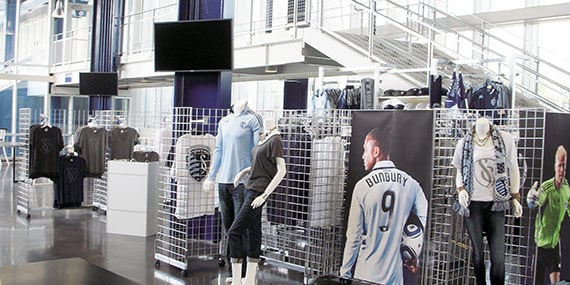
3. Longevity
Some seasonal displays, such as those implemented during the holiday season, don’t need to last for more than three or four months. However, if your display is meant to be permanent or even semi-permanent, then you need to take into account its longevity and probable shelf life.
For the most part, a retail fixture’s longevity will be dependent upon its substrate, or the material of which it’s made. Cardboard fixtures will likely only last for one season, whereas acrylic displays may last a year or two before they’re no longer effective. On the other hand, steel fixturing is considered a permanent display, lasting for three to five years before needing to be replaced.
The longevity of your display also depends in part on its mobility. For example, if it’s a fixture that needs to be moved around frequently, you may want to consider adding wheels to reduce the amount of wear and tear that it undergoes.
This front-of-store display we designed for Bayer Animal Health is a great example of a retail fixture designed for longevity. Its wheels allow it to be moved around with ease, so retail employees can shift it around to clean or re-organize without damaging the fixture itself.
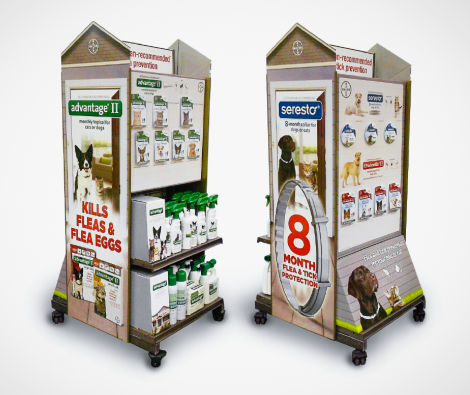
4. Placement
Lastly, the placement of your fixture within the retail environment can have a major impact on whether or not it’s successful.
Consumers typically take a natural path through any retail environment; often, consumers will immediately move toward the right of the store upon entry, but each retail location has its own traffic patterns that you’ll need to analyze and consider when choosing placement. If you place your retail fixture in a high-traffic area to act as a “speed bump” for consumers, it will naturally perform better than it would if you stuck it in the back of the store with less foot traffic.
For example, these nesting tables displayed in the center of a Blue Bunny Museum gift shop draw the customer’s eye in a high-traffic area, effectively highlighting the products on the tables.
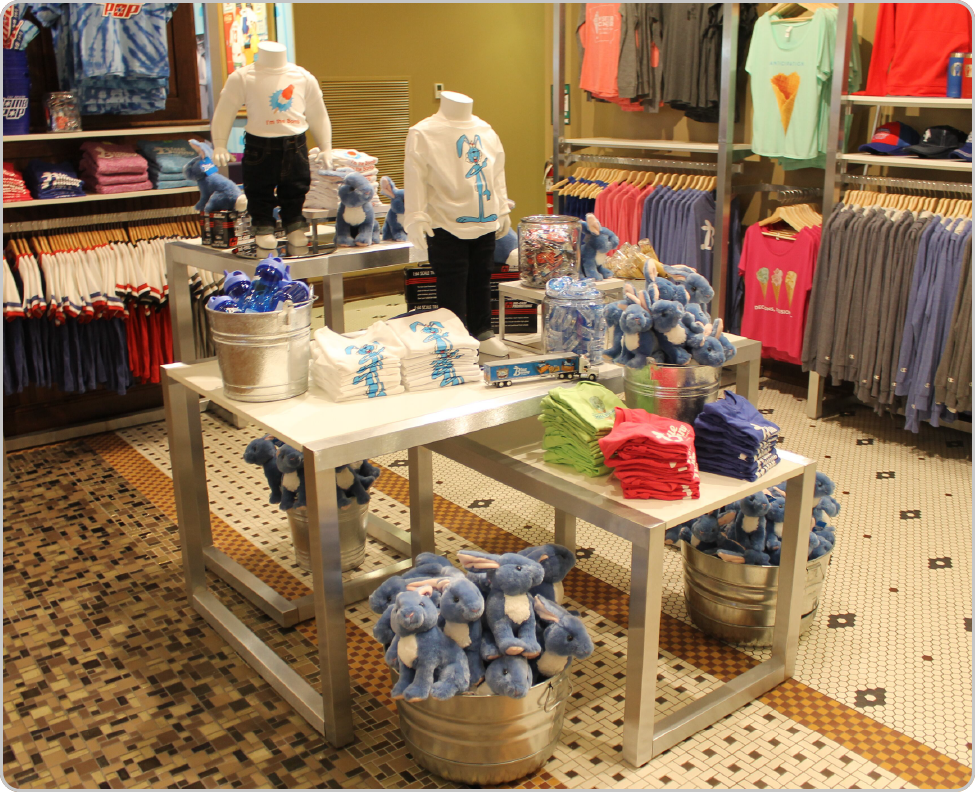
If your retail store fixture is performing poorly, consider refreshing the layout of your store to redirect foot traffic and re-engage your customers.
From Stock to Stustom, InStore Design Display Can Help You Find the Retail Store Fixture that Suits Your Needs
All successful retail brands have one thing in common: they engage the customer in-store.
Designing an immersive experience for your customers begins with choosing the right retail fixture on which to display your products—or, if you really want to stand out, designing it from scratch.
InStore Design Display is an experienced retail display designer and manufacturer. We understand the ins and outs of the retail space, so we can work with you to design an in-store experience that truly stands out, from temporary seasonal displays to permanent retail environments.
Have a great idea for your next retail display, but aren’t sure how to bring it to life? Request a consult, and we'll get started right away.
Subscribe Here
Stay up-to-date on what's happening on our podcast and blog.

